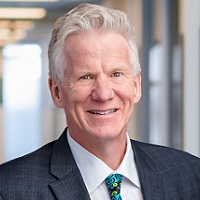 By Nick van Terheyden aka Dr Nick, Principal, ECG Management Consulting
By Nick van Terheyden aka Dr Nick, Principal, ECG Management Consulting
Twitter: @drnic1
Host of Healthcare Upside Down – #HCupsidedown
We’re living longer and healthier lives these days, though “healthier” comes with a caveat. It’s true for the most part, but we face rising challenges to the general health of the population. This is especially true in the US, which has seen a drop in a number of metrics that measure the health of a population—including life span, which has declined for the last two years. No doubt the pandemic has had a measurable negative impact on life expectancy, but that alone does not explain the decline.
Episode NOW on Demand
Diabetes is experiencing a worrying rise in incidence in the US. For most people, the term is understood as a problem with sugar, specifically excess sugar in the bloodstream. There are two clearly understood forms of diabetes found in our population: Type 1, perhaps better referred to as insulin-dependent or juvenile diabetes, and Type 2, or adult-onset diabetes.
The incidence of diabetes is high, and many patients remain undiagnosed until they present in an emergency room or doctor’s office with a serious clinical condition. This disease is a silent killer and one that can and should be aggressively managed and treated.
Jon Bloom, MD, is changing the way we diagnose diabetes. An anesthetist and the CEO and co-founder of Podimetrics, Dr. Bloom joins me to explain the importance of early detection and the need to bring simple-to-use diagnostic tools into patients’ homes. Below are a few excerpts.
A silent epidemic.
“It’s remarkable to think about the number of diagnosed cases, which is over 33 million [in the US]. But so many more patients are undiagnosed. We don’t find out about it until we see a complication, or they present from [a symptom] of diabetes, leading to morbidity and potentially surgery. So it’s a silent epidemic as much as it is a very vocal epidemic, and the total impact is quite astounding.”
Practicing Civil War-era medicine.
“I remember one of my first rotations was in the ER in Pittsburgh, and a woman was wheeled into the room who had very thick bandages covering her lower extremities, all the way to above the knee. As we took down the bandages, there was gangrene. I knew, even with my limited education, that she was likely not going to leave the hospital with her legs. And that was such a dramatic presentation; how could it have come this far? How could the system have missed this? How could this have happened? And then fast forward years later, I’m an anesthesia resident and I’d spend whole days in the operating room doing amputations. It was crazy to me that we were still catching them so late that still we’re doing Civil War medicine—if it’s a disease, cut it off. That’s the best practice right now. And it just seems like such a tragic waste of freedom for a patient, and a waste of life, because the mortality is as high as 70%.”
Bringing care to the community.
“We realized that we could build a mat—you just step on it for 20 seconds a day, and then you go on with the rest of your life. That seemed like a platform that we could get into the home and get regular usage out of. On the top surface, we add an array of temperature-measuring sensors so we can look for the early sign of tissue breakdown, and then we can see a localized foot fever. We did a seven-center trial that showed that we can detect 97% of these wounds a little over five weeks before they presented. But the key is to make it super simple. We get very high engagement rates, and with that, we can get this into homes, get constant thermal data from a patient, and prevent the entire cascade from occurring. Getting access is key. The way our health system is set up, you need to come to us. It’s not built to go to the patient when the patient needs the care. We want to know the moment there’s an issue and bring resources to that patient at that time.”
About the Show
The US spends more on healthcare per capita than any other country on the planet. So why don’t we have superior outcomes? Why haven’t the principles of capitalism prevailed? And why do American consumers have so much trouble accessing and paying for healthcare? Dive into these and other issues on Healthcare Upside/Down with ECG principal Dr. Nick van Terheyden and guest panelists as they discuss the upsides and downsides of healthcare in the US, and how to make the system work for everyone. Join the conversation on Twitter at #HCupsidedown.
This article was originally published on the ECG Management Consulting blog and is republished here with permission.
About the Show
The US spends more on healthcare per capita than any other country on the planet. So why don’t we have superior outcomes? Why haven’t the principles of capitalism prevailed? And why do American consumers have so much trouble accessing and paying for healthcare? Dive into these and other issues on Healthcare Upside/Down with ECG principal Dr. Nick van Terheyden and guest panelists as they discuss the upsides and downsides of healthcare in the US, and how to make the system work for everyone.
Tune in weekdays at 9:00am, 5:00pm and 1:00am ET.
Join the conversation on Twitter at #HCupsidedown
